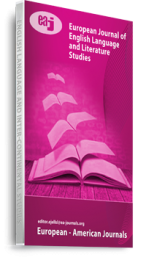This paper explores the paradoxical imagery of Arab women in two plays by Christopher Marlowe, Dido Queen of Carthage (1594) and Tamburlaine the Great (1590). These Renaissance plays focus on gender and identity questions which are highly contemporary and relevant to Oriental culture. The Orient is the scene of action and the cast consists of oriental characters. The Orient was also one of the main sources of inspiration in the Renaissance. This paper highlights and compares the interrelationship between Arab male and female identity in a context of hyper-masculinity. Elizabethan playwrights were interested in dramatizing the Orient in their dramatic writings (Al-Olaqi, 2012: 1767). They depicted the Orientals as warlike, lustful and bloodthirsty. (Wann, Louis,1915:427). Marlowe’s Tamburlaine and Dido Queen of Carthage echo the Elizabethan interest in Arab women with an Orientalist discourse focusing on vilifying Arab characters as patriarchal and immoral beings. A feminist reading of Marlowe’s Dido Queen of Carthage, reaffirms the image of a seductive East peopled with subversive and lustful Arab women, while in contrast they are depicted positively in Tamburlaine the Great as adamant, determined, loyal, and adherents to traditional values. In order to understand this contradiction in the depiction of Arab women in two plays by the same author, it seems necessary to trace out the traditions of Elizabethan Orientalism in relation to the religious, cultural, historical, and political context of that epoch.
Keywords: Arab women, Dido Queen of Carthage, Elizabethan drama, Marlowe, Tamburlaine great, orientalism

